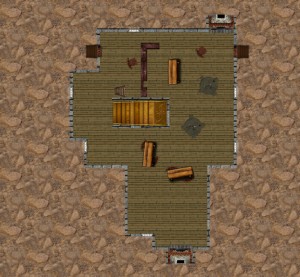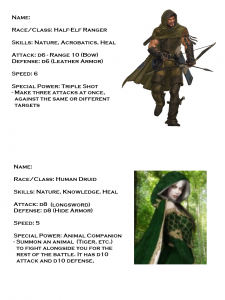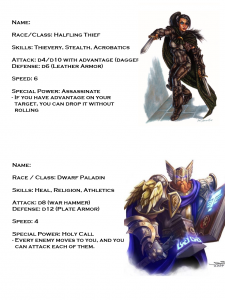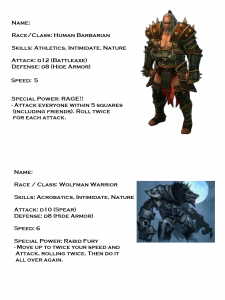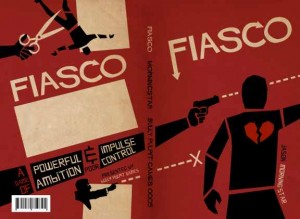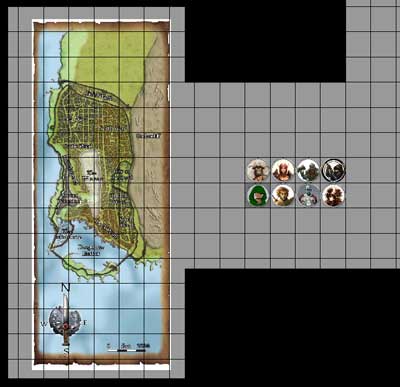Yesterday, I wrote about the preparation and starting schene of the Kid-Friendly RPG (KFRPG) game that I ran for a group of six young boys at Con Jr. for TactiCon 2013. They were on a quest to find and take out an evil wizard known as Kalor the Terrible, but first they had to take care of the rat problem in the basement of the Rusty Lantern Inn.
Scene 2: Rats in the basement
I moved to a basement map and put a bunch of rats on the map (once the party had sorted out their light situation, of course). We rolled for initiative (one player versus the GM), and the rats won.
Rats are wimpy monsters (even big 50-pound rats like these), so they have a d4 for attack and defense (a standard monster in KFRPG gets a d6 for both). This let the players learn how combat works without being seriously threatened.
As the rats started dropping, a couple of players wanted to heal the rats and train them. Sure, why not? I had them roll some hard heal checks once combat was over, and they were able to heal and train three of the rats. Now they had pets! Pseudo-zombie pets, sure, but at least they were loyal (if a bit gross).
Scene 3: Back to the inn
Back upstairs, the players decided they wanted to go see a blacksmith. However, it was night time, so they would have to wait until the next morning.
What about Kalor the Terrible, you may ask? What indeed! No mention of him from the players. They needed a blacksmith, for some reason! (I still have no idea where this notion came from.)
They decided to get a good night’s sleep (recovering the few hit points they had lost).
Scene 4: Meet the blacksmith
In the morning, the party went off to see the blacksmith. I brought up a map of a town and indicated which building was the smithy.
Using Masks, I named the blacksmith, and I decided to pull out the token for good old Sir Oakley from Madness at Gardmore Abbey to represent the smith. He was heavily armored; sure, why not?
The players started shopping, talking about the cool stuff they wanted to buy. Then one of the rangers declared that he was just taking one of the blacksmith’s swords.
Naturally, the smith shouted for him to drop the stolen sword, whereupon the ranger decided to toss a dagger at the smith.
Yes, the heated battle was on!
Some of the players decided to join the battle, even as the smith’s apprentices came out of a nearby house to join the fight.
Some PCs decided to steal some armor and put it on, right in the middle of battle.
Others decided to get out of there to go check out the festival tent with gnomes in it on the other side of town.
Some changed their minds in the middle of the fight, going back and forth between fighting and paying for the stuff they were taking.
Eventually, the ranger who started the fight, along with the wizard he had dragged into it, got themselves subdued and arrested. The magistrate would be in town the next day to hear their trial.
The other four members of the party debated what to do. Two of them decided to just hang out at the inn. The other two waited for nightfall, then went for the jailbreak.
Scene 6: Jailbreak
The would-be rescuers (paladin and wolfman) decided that they needed to know the exact layout of the jail (or at least as much of it as they could reasonably discern from outside), so I sketched a quick map in MapTool (amazingly, I was not expecting to need a jail map; go figure).
After dark, the jailbreakers went around to the narrow windows high up in each wall of the jail, peering in to try to find their allies. This involved the acrobatic wolfman standing on the shoulders of the athletic paladin. Eventually, they found the right cell.
Wolfman called out to the prisoners, who started to wake up, but at the same moment the paladin heard someone coming around the building. Wolfman and paladin hid in the bushes as a couple of guards came by on rounds. The guards didn’t see them, and walked on by.
Meanwhile, the captured ranger and wizard were now awake, and they had seen the wolfman’s face for a moment before he dropped out of sight. They decided to make a big ruckus to draw the guards – which worked.
While two guards were outside on patrol, the other two guards came to check on the prisoners who were making the noise. The ranger made a fantastic roll to reach between the bars to grab one guard by the neck while the wizard shot a bolt of electricity at the other. They were able to grab the keys off a guard’s belt and make their escape, locking the guards in the cell.
Meanwhile, the patrol had passed by the back of the building, so the paladin decided to try to toss a hammer between the bars of the window to give his allies a weapon – not knowing that they were already escaping. By the time he got the hammer through the barred window, it ended up landing on a locked-up guard as his friends were heading out the front door, dealing with the patrol.
Sheesh.
Scene 7: On the run
Now that everyone was free (and outlaws), the group decided to go get their two sleeping party members and hit the road.
They talked about their general plan – staying within sight of the main road into the hills, but keeping off the road itself. Walking by night, sleeping by day. Going nowhere in particular – just to a faraway town.
Kalor the Terrible? Who’s that?
At this point, we were about 90 minutes into our two-hour session, so I decided it was time for a final battle.
Silly players; in their haste to get out of town, they had unwittingly set up camp in a dragon’s hunting grounds.
A few kobolds came upon the party and started talking about “the Master.” After combat began with the kobolds, the Master – a dragon – showed up.
Now the party got to toss out their big, special blue chip powers, as the dragon flew around and breathed fire.
Eventually the good guys (?) were victorious and the dragon was defeated. The only tricky part was how best to skin the dragon to make awesome armor from its scales.
Fin
Thus ended Kid-Friendly RPG at TactiCon 2013. As expected, it was a pretty crazy game, but I was ready for anything and just rolled with it. Sure, these kids became bloodthirsty, jailbreaking outlaws and completely forgot about the evil wizard menacing their country, but they got some cool dragonskin armor out of the deal. All’s well that ends well!
The kids seemed to have a blast, and I enjoyed their unpredictability. If you keep the rules simple and your mind open, kids can create a rollicking good time in an adventure game.
Michael the OnlineDM
@ClayCrucible on Twitter


